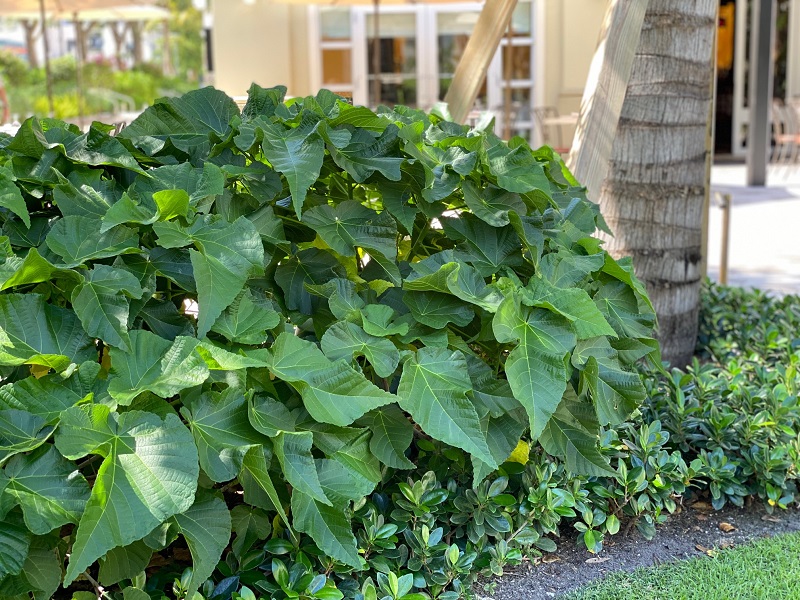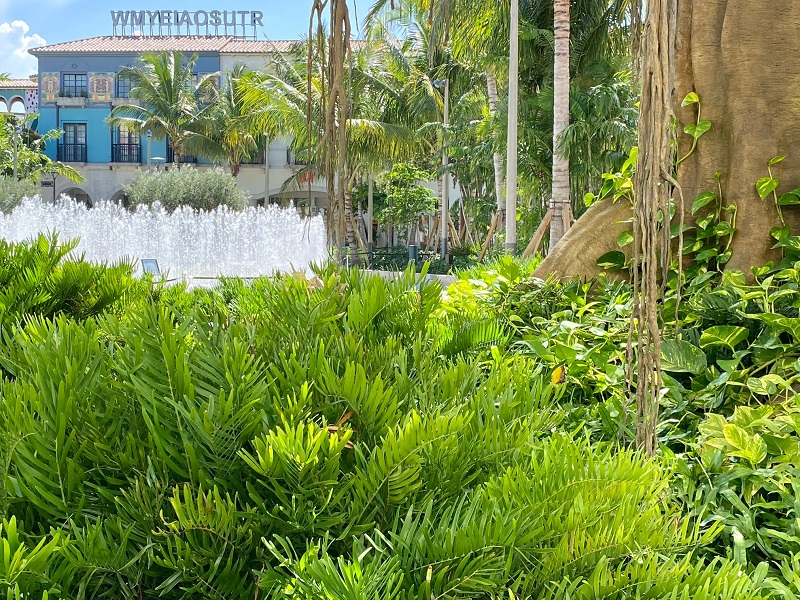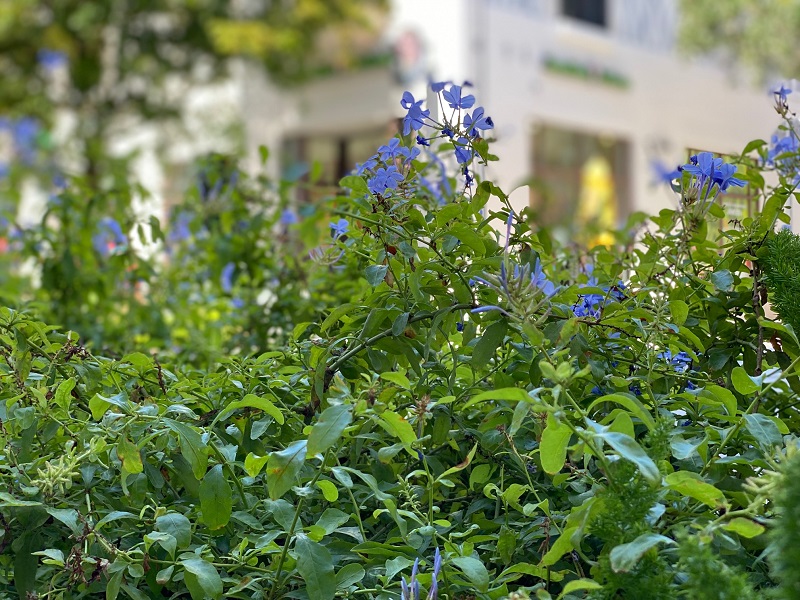Garden Tour: A Stroll with Master Gardener Mike Kane
Located in the heart of Downtown West Palm Beach, The Square is a lush urban oasis so brimming with plant life at we just had to stop and learn more about what is growing in the neighborhood. We turned to Master Gardener Mike Kane, co-founder of The Garden Shoppe, to join us on a stroll throughout The Square to find out more about the vegetation that makes the neighborhood so very green and abuzz with life. Here is what we learned on our garden tour.

Colocasias
Location: On the square in front of Sur la table
Colocasias are tropical looking perennial plants also known as elephant ear or taro. Their huge, heart-shaped leaves can measure up to 2 feet across and the foliage color ranges from lime green to almost black. Many of the species have long been grown for the edible starchy corms or tubers as an important staple food in tropical regions.

European Olive Tree
Location: On the lawn
This long-lived tree hailing from the Mediterranean serves as the center piece of The Square's lawn and is at least 100 years old. Also known as Olea Europaea, this slow-growing, evergreen tree is prized for its picturesque yet gnarled trunk and spreading crown.

Dombeya
Location: On the lawn
Also known as the Tropical Hydrangea because its flowers are similar to the hydrangeas we know from up North, Dombeya is a versatile showstopper that can grow in both full and partial sunlight. Their pendulous flowers are round in shape and resemble pompoms hanging about the leaves, attracting bees and a variety of butterflies.

Angel’s Trumpet
Location: Between Water Pavilion West Palm and Il Bellagio
Angel's trumpet is a spectacular drama queen in the garden, with huge, sweetly-scented blossoms suspended from its branches. With flower colors in shades of pink, peach, yellow and white, the lily-like blossoms can be up to 12 inches in length. But don’t let its angelic name fool you, these shrubs belong to the Nightshade family of plants, which contains toxins and is highly hallucinogenic and poisonous if ingested.

Coontie
Location: Under The Wishing Tree
A popular landscape plant as well as an important host to the caterpillars of the rare atala butterfly. Florida gardeners noticed the butterfly was going extinct and planted Coontie to help support the regrowth of the butterfly population. Coontie is planted in clusters of ten or more in order to attract the atala butterfly. It is a cycad, a form of plant life that was dominant during the age of the dinosaurs, and it played a prominent role in the diets of native Indians and, later, the Seminoles and settlers who succeeded them.

Medjool Palm
Location: On the square between The Garden Shoppe and Il Bellagio
Native to the Atlantic coast of Morocco, the Mejool Palm, also known as the feather palm, gets its name from the Medjool Date fruit that the palm produces. At sunset, The Square’s Mejool Palms plays host to the green parrots, which hang out at its canopy each evening. Medjool Palms were once reserved only for the royal family of the Sultan of Morocco and were first imported into the USA from Morocco in 1927. When grown in humid tropical climates like Florida, the fruit tends to be of low quality, often dropping from the tree before ripening.

Blue Plumbago
Location: Along The Avenue across from Jamba Juice
Native to South Africa, Blue Plumbago is prized for its blue phlox-like flowers, which bloom year round. The plant attracts an array of birds and wildlife, including butterflies, which are drawn to the scent of the flowers.


